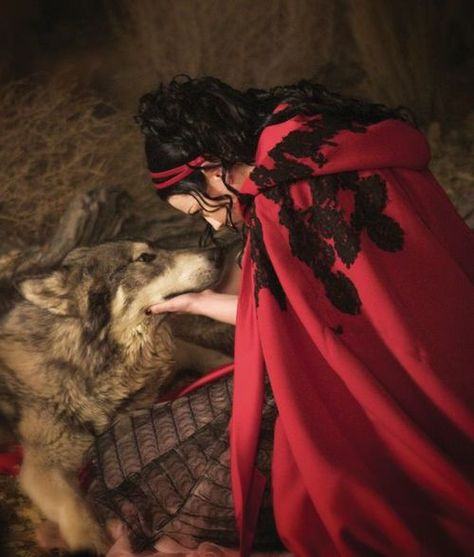#lupercalia
Text









Blessed Lupercalia, share (self)love
#valentines day#vday#lupercalia#whimsigothic#whimsigoth#whimsy#whimsical#whimsigoth room#whimsigoth fashion#whimsigothcore#whimsigothaesthetic#witchy aesthetic#witches#witchy#witchyvibes#witch#witchcraft#witchythings#witchcore#witch aesthetic#witch blog#fashion#style#whimsical aesthetic#aesthetic#outfit#ootd#valentine#pagan
1K notes
·
View notes
Text

Wishing an enjoyable Lupercalia to all ~ be sure to feed your she-wolf well.
85 notes
·
View notes
Text
February 14th, Valentine’s Day: Corporate. Social pressure to Spend Money or else you don’t love your partner. Excludes single people. Exploits agricultural workers for chocolate. Every restaurant is crowded and every card in the grocery store aisle sucks.
February 15th, Lupercalia: Community-driven. Free. Inclusive. Worker-friendly. Ecologically sustainable. Naked priests run around chasing people with whips.
122 notes
·
View notes
Text
happy run around naked and slap pregnant women with goat skin day(s) to those who celebrate<3
217 notes
·
View notes
Text
Happy Lupercalia!
May you have all the fertility / whips for kicks you wish for! 🩸

(Sadly, probably not the origin for Valentines -https://penelope.uchicago.edu/Thayer/E/Roman/Texts/secondary/SMIGRA*/Lupercalia.html#note:February_fifteenth )
47 notes
·
View notes
Text

HAPPY LUPERCALIA !
Source: https://culters.store/es/antigua-roma/314-lupercalia-camiseta-negra.html
#lupercalia#pagan#occult#roman#paganism#occult art#roman empire#pagan holidays#roman holiday#occultism
26 notes
·
View notes
Text


Created these two fine fellows for a Lupercalia card exchange. Well Terzo I actually created for another image, but he worked so well for this too! ❤️💜
Give the boys some love! 🖤
#the band ghost#ghost band fanart#cardinal copia#terzo emeritus#papa terzo#lupercalia#love them#i love the band ghost#ghost band#ghost copia#digital art#copia#give them some love#procreate#procreate art
21 notes
·
View notes
Text

SURPRISE! Rose Turtles have arrived!
We recently became authorized sellers of CinderWings3D's amazing designs, and we'll admit the Rose Turtle (also known as Roseurtle) was one that immediately caught our eye. CinderWing3D is a well-known artist in the 3D space and we can't wait to share more amazing collectibles with you throughout the coming year!

Honestly we got a little tired of JUST roses after our Fairytale Collection drop and thought these Rose Turtles, while adorable, were also way more on theme and appealed to people besides the romantics this time of year. Got a significant other you want to buy this for? Cool! You don't? Also cool! Have at it. Collect them for yourself. We won't stop you.
And if you don't want any at all? Great! But passing the word would be really appreciated!

(Seriously, we're tempted to print one of every color we have but y'all...that's a LOT of turtles).

Our Rose Turtles are currently available in rainbow, red, and pink, and are about 4.5 inches long and wide. They're fully articulate too -- upcoming vids will show us moving them around and in various poses, but hopefully not going after anything other than the roses we used for their photoshoot!
We'd rather you bought through our website www.planterfulpieces.com (link also in pics) but we also gotta do battle with the algorithm so through Insta or Etsy (shop is the same name) works too!
#3d printing#turtles#turtle#reptiles#cute#rainbow#shiny#red#pink#valentine's day#lupercalia#fidget#collectible#technology
24 notes
·
View notes
Text
Happy Lupercalia!
May you be visited by a near nude Marcus Antonius bearing a crown and bits of goat flesh during this festive time
#lupercalia#Marcus Antonius#mark antony#roman history#ancient rome#roman empire#how often do you think about the roman empire#julius caesar#ancient history#roman holiday#ancient holidays#holidays#no there really is no link between lupercalia and valentines other than they happen at similar times of the month of February#unless you want to infer that Antony trying to give Caesar a crown was the first example of a Valentine's present#the cusp of spring is kinda the universal time for starting to think of mating#bits of goat flesh have nothing to do with greeting cards#there really is no explanation for why we celebrate Valentine's the way we do#st valentine#valentines day#happy valentines#gaius julius caesar#caesar#lupercal
17 notes
·
View notes
Text
An Unprecedented Gift
With Valentine's Day and Lupercalia just around the corner, let me tell you of a very romantic thing that Antonius did for Cleopatra.

Some of us do not go beyond rationality, and some of us have no limits to making our loved ones happy. So, how far would you go to make the person you love happy?
Marcus Antonius had brought enough sand from Egypt to Sedir Island in modern Turkey to form a beach in order to make his beloved Cleopatra happy. Very romantic ❤️
Antonius meets Queen Cleopatra in Tarsus where his life changes drastically.
In the beginning, what is important for Antonius and Cleopatra is their common political interests. Cleopatra aims to gain the lands she lost, and Antonius desires to have a strong ally with him for his attack on Parthia. This political alliance, which will turn into an epic love in the future, is only a strategic collaboration at first. But there is love and love changes everything. They fall in love and they even face conflicts with their families denying this relationship. But you know, love is blind and it overcomes all.
The political alliance in time turns into one of the greatest love stories of all time. The moments full of love gradually turn into wonderful stories, one of which happens in Sedir Island.
One day, the couple, who goes to the island, spends a holiday that will not be erased from their memories. The island has everything: beautiful nature, a magnificent sea, gorgeous sunrises, and sunsets. Only one thing is missing: sand. Sedir Island doesn’t have a beach where golden sands meet cool waters. This shortcoming must have bothered Cleopatra so much that she pours out her heart to Antonius.
Antonius, on the other hand, cannot remain indifferent to the sadness of the woman he desperately loves and presents the legendary gift to Cleopatra. Antonius has a beach built by carrying sand to Sedir Island. However, upon the order of Antonius, a total of 60 ships of sand were transported from Egypt to Sedir Island. And the island finally gets its beach, and Cleopatra, for whom Antony has accomplished the impossible, gets her to wish.
This place is now known as Cleopatra beach and is the most well-known place on Sedir Island, which attracts visitors with its natural beauties, walls, and theater.
#valentines day#lupercalia#mark antony#marcus antonius#marc antony#cleopatra#cleopatra vii#antony and cleopatra#love#lovers#ancient history#ancient egypt#history
17 notes
·
View notes
Text









Blessed Lupercalia
#valentines day#vday#lupercalia#whimsigothic#whimsigoth#whimsy#whimsical#whimsigoth room#whimsigoth fashion#whimsigothcore#whimsigothaesthetic#witchy aesthetic#witches#witchy#witchyvibes#witch#witchcraft#witchythings#witchcore#witch aesthetic#witch blog#fashion#style#90s fashion#whimsical aesthetic#aesthetic#outfit#ootd#valentine
1K notes
·
View notes
Text

Ted Hughes, Lupercal; from ‘Lupercalia’
100 notes
·
View notes
Text


Happy Lupercalia! Vampires can appreciate a holiday of carnal lust and self-indulgence as much as any other creature of the night
Self tied
#goth#gothic#cosplay#blonde goth#cosplayer#goth model#shibari#astarion#astarion cosplay#baldur's gate 3#baldurs gate astarion#baldurs gate cosplay#lupercalia#nonbinary#azura rose#fangs#vampire#vampire fangs
11 notes
·
View notes
Text
Vegan Lupercalia where instead of sacrificing animals you murder the fuck out of some pomegranates
50 notes
·
View notes
Text
Lupercalia vs. Valentine's Day

(Pictured: Etruscan Uni, a precursor to Roman Juno, wearing her goat headdress.)
There is an annual deluge of blog posts, articles, and cute works of art that attempt to link Valentine's Day to Lupercalia and every year for the last 5 years I have put together a little walkthrough to provide some context. This goes hand-in-hand with my earlier post on Roman Halloween, aka the entire month of February.
If you have ever been tempted to believe that Roman religion was identical to Hellenic religion, you would be pretty close to correct but only after the time of Emperor Augustus. More like a smoothed out Romanized version of Hellenic religion. A thing that deserves its own post, honestly. The big point that I want to emphasize here is that there are--or I guess were-- two completely different versions of the old Roman religion. The older one was indigenous to Rome, shared a lot of features with the shapeshifting pastoral cults of Arkadia, and can best be described as the archaic religio. Prior to Augustus' reign, Rome was led spiritually by a team of hereditary priesthoods known as the Flamen. I am telling you this because Lupercalia is a day that belongs to the archaic religion of Rome and not the imported and converted one that came later. Okay, now we are ready! Here we go!
Lupercalia
Lupercalia was the public face of the old Roman wolf-cult. I jokingly call it the wolfstravaganza because it was part of a complex family of unambiguous werewolf rituals related to the hereditary Flamen priesthood of Mars (the Roman agricultural wolf-god). The greater wolf-cult was once (and still is in some areas) wide spread throughout Southern Europe and North Africa. Most people who have even casually looked into this topic are aware of Lupercalia as a single day event. The wolfstravaganza presents Lupercalia in its natural place as just one part of an entire series of ritual days dedicated to different aspects of the old wolf-death-agricultural-cult.
In Antiquity, Lupercalia was celebrated on the 7th day of the wolf-cult's 13 day wolfstravaganza that kicked off around February 9th. This placed Lupercalia on February 15th. All of these numbers had a coded significance. The number 9 was the number associated with transformation between human and wolf and we know this because the number is used consistently and repeatedly in Roman lycanthrope mythology and iconography. The number 7 was likewise considered the most auspicious day for a holiday so seven days into the private wolf-cult festivities would be the ideal day to do something publicly significant. Two days after Lupercalia, which would be February 17th, came the celebration of Romulus' (the deified werewolf himself) ascension or transformation into godhood as the reborn indigenous deity, Quirinus. This would be 9 days from February 9th, counting the 9th as day 1. So, this is the natural and perfect day to place a transformation event.
I cannot emphasize enough how much symbolism is contained in numbers. Odd numbers were considered lucky and even numbers were considered unlucky so it would have been important to conclude the wolfstravaganza on an odd number of days. The 13th and final day of the full wolfstravaganza was February 21st. Also known as a "holiday" called Feralia--and it was terrifying. Feralia was a day given over to the agents of the dead--the descendants of Romulus' twin brother, Remus--as they ripped through pantries throughout the city, eating and drinking with the unquenchable hunger of the dead. Because that's what werewolves do...
These 13 days were seen as the days of the dead. The entire month of February was devoted to solemn rituals to appease the dead and that 13th day, Feralia, was the most dangerous day on the Roman calendar. On the Feralia, members of the wolf-cult would raid the storehouses of Roman households to eat and drink their fill in exchange for protecting the living from the spirits of the malevolent restless dead. As I said earlier, the wolf-cult was originally led by a hereditary fraternity-priesthood known as Flamen. The tradition is probably older than the concept of Rome itself and I say that because of just how widespread this cult was and still is active--extending from Iberia to (what is today) Eastern Turkey. Surprise! There used to be, and kind of still is, an absolutely enormous chunk of the world that essentially had a werewolf based religion prior to the rise of the more literate and cosmopolitan Hellenic cultures.
Back to Lupercalia though... Lupercalia was among several occasions--the terms holiday or festival don't exactly fit--in the old Roman calendar that were so old that they ceased to make any sense to modern educated Romans by the time of Emperor Augustus, who was also a religious reformer. Many indigenous writers such as Livy and Ovid attempted to explain the strange trappings of the holiday with folklore relating to Romulus & Remus--the wolf-twins. What most people don't realize, because the wolf-cult is so off the Radar as far as Roman religious history is concerned, is that Romulus & Remus were not considered human. To call them demigods is accurate in a sense but incomplete. They were both considered wolf-men in antiquity but one was considered the wolf of the living (Romulus) and the other was considered the wolf of the dead (Remus). And you can see this theme repeated over and over in all of the stories pertaining to Romulus & Remus.
I prefer to stick to Livy & Ovid as far as written sources on this go because--as I said a moment ago--they lived during the time of transition between the old indigenous archaic religious practices and the religious reforms of Emperor Augustus AND they were native to the region themselves. This means they grew up hearing these stories from childhood as part of the transmission of native oral history. In those stories, Remus is the one who is always either dead or in mortal peril AND he and his agents are always hungry. Remus has the appetite of the dead because he is considered the fully dead wolf. As brothers, their close but competitive relationship is an allegory for the beloved departed who always desire the food of the living and the living who need that food to survive. Nowhere in the calendar year is that more true than in February. It is a cold, wet, dismal month that brings rot to pantries and uncertainty to the harvests in the coming year. I have explained this a bit more thoroughly in another blog post relating to the Roman Month of February. So, there is a broader context of death for the month that Lupercalia falls into.
If you have ever done any reading about Lupercalia, you have likely heard that boys would wear wolf-pelts and run naked through the streets lashing women with bloody strips of goat hide to improve "fertility." Fertility is a rather broad concept that a lot of archaic rituals from antiquity are categorized into but there is some serious nuance to it and that makes a big difference. The type of fertility ritual in play here was related to returning mother's milk to sweetness so that babies would not reject the breast.
Rome was plagued by high infant mortality rates and infertility due to lead poisoning, which has the same symptoms as a baby goat who refuses to nurse due to the mother being kept too close to a buck. Bucks stink. A lot. And this is the time of year when animals start birthing and this would become a major issue if it wasn't handled in some way. One of the methods of dealing with this was and still is a buck cull. This effectively removes the stink of the buck, which returns the goat's milk to sweetness so the babies will nurse.
Roman mothers were having this same problem thanks to the lead poisoning. February to March was a time when the first babies of a proper June wedding would start being born, which is why June & February are sacred to Juno and March is sacred to Mars. If sympathetic magic needed to be done to protect babies born during these rough, lean months, the middle of February was the time to do it. A buck cull would provide a lot of nutrient dense meat for pregnant and nursing mothers. And goat milk is more easily digestible for human babies who have rejected the breast so it is in many ways important to make sure the milk of both humans and goats is fit for consumption.

(Pictured: Juno Sospita wearing her goat headdress.)
Both Livy and Ovid attribute the rituals of Lupercalia to the wider cult of Juno--who is a goddess of forests, goats, and milk as well as the mother of Mars, which would make her grandmother to Romulus & Remus. Juno is said to have taught them this ritual through an Etruscan augur.
February is the month of the dead and the wolf-men are the descendants of Romulus & Remus, the legendary founders of Rome itself. This lactation ritual happens to fall here because of how birth cycles map out on the calendar year. The people who would have the spiritual authority to perform this sympathetic magic would be the werewolf descendents of Juno. Which is just a fun concept. So, it was they who sacrificed as many goat bucks as would be required to do this and then those strips of hide would be dipped in blood and splashed over anyone with a womb who wanted their blessing for this.
As time wore on, a disconnect arose between the hereditary cults and the educated up-and-coming political families who did not have those old ties to spiritual authority through family lineage. There was absolutely some overlap between the two due to marriages between older families and those who were politically on the rise. That only seemed to heighten the confusion as this and other elements of the old archaic Roman religion had secret aspects handled by initiation and birth. The old agricultural chants were sung in a language that grew further and further from the more widely understood Latin with each passing generation. At a certain point, educated Romans started questioning and pushing back against the old and often really odd rituals of their grandparents' generations. They had to make guesses about the provenance of many indigenous practices. Eventually, the old religion just went out of style.
At least part of the reason for the disconnect between the educated classes and the Roman public at this time was likely due to the fact that the priesthood for the wolf-cult was hereditary so the actual rules and reasons for "why and how" was a closely guarded mystery. There are also hints about some elements of cannibalism involved in the older rituals that may have been either real cannibalism or a ritualized stand-in for it. This was not seen as something that a civilized nation should do. It was mysterious, it was weird, it was old, and it was not subject to the rules of the modern Augustan priests who formed a hierarchy on up to the Rex Sacorum. This meant that the wolf-cult was eventually pushed to the periphery of Roman religion, seen as a relic or an antique from another time that was allowed to continue only because Romulus was so important to Roman identity. The educated classes either looked for ways to explain it or were a bit critical of it.
Valentine's Day
Now we can move on to the creation of Valentine's Day. I'm not going to get into the more modern romantic connotations of the holiday, we are going to stick to the time period between about 100-500CE. This is what I think happened based on the full context of what was traditionally going on during the month... (Artist's Interpretation)
In the early days of Christianity, the public largely took the wheel in creating the cultural practices that work alongside the religion. Back when Christianity had a very heavy focus on martyrdom, your average Roman Christian was keen to prove their faith. They did this in many subversive ways, responding to the dominant polytheistic traditions around them. Keep in mind that February itself was still the month of the dead to the vast majority of the population. As such, marriage was absolutely forbidden for nearly the entire month because it was seen as incredibly unlucky. The preferred month for marriage was June because Juno was the goddess of marriage. If you count off 36-40 weeks from June, you land somewhere between February and March. So, February was considered a proper month to give birth. Also keep in mind that mother and infant mortality rates were quite high and, thanks to widespread lead poisoning in Rome, many mothers had sour milk which would also cause infants to not take breast milk and die of starvation. February was just devoted to other things. Romance was not high on anybody's to-do list at this time of year.
When Julius Caesar reformed the Roman calendar, he left February alone. It was considered so unlucky that he didn't want to add more days to it. That is why it still only has 28 days when others have 30 or 31. Remember that even numbers were considered unlucky. So here we have the month of death that ends in an even number, ghosts are running rampant, werewolves are doing strange things in the city streets, what is a good Christian to do to prove their faith? Why, get married of course!
If heaven is real then there are no such things as ghosts because the dead are all in heaven or hell! If the Christian god is real and all other gods are fake then Juno will not be blasphemed if you get married in February! And if Jesus died for your sins then there is no such thing as bad luck so a faithful Christian can get married smack dab in the middle of the unluckiest month in the calendar year and nothing bad will happen!
February 14th was literally considered the most unlucky day of the year to get married... if you ascribed to the Roman religion. However, if you truly believed in the Christian god and heaven, getting married on this day would prove to all that you had no fear. So, Lupercalia has a little to do with how Valentine's Day came into existence but not much. It DEFINITELY WAS NOT an occasion of naked kinky boys with sexy whips and orgies. That interpretation came around long after the practice had faded into obscurity and people were looking around for ancient origins for modern holidays. It relies on a outside-looking-in narrative for Lupercalia.
Keep that in mind when you see those posts about supposed crazy ancient Roman romance on this day. It was not a thing. Now go do your part and eat some goat.
139 notes
·
View notes
Note
for the ask game!
13. does your country (or family) have any specific superstitions or traditions that might seem strange to outsiders?
13. does your country (or family) have any specific superstitions or traditions that might seem strange to outsiders?
Oh boy do we. I tried to explain it to slightly horrified-looking Western Europeans more times than I could count.
Basically, on Easter Monday, we have a tradition of men whipping women with a bundle of sticks tied together. They recite a poem while doing it and after it, the women give them a decorated egg. It's usually interpreted as a fertility ritual.
I fully realise it sounds kind of terrifying, but I promise it's not as bad as it sounds. It's mostly symbolic. Like you don't go full-on with the whipping unless you're a total jerk. There has been a lot more emphasis on consent in the recent years. There's a window of time when girls can get their revenge by splashing water on the boys as well.
I've also recently found out about the Roman festival of Lupercalia and ever since then, I kind of see it as the Lupercalia's spiritual successor?
8 notes
·
View notes